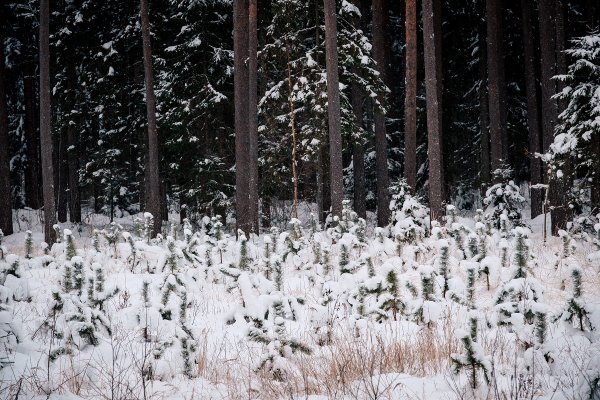
As of 2024, LVM to Stop the Double Forest Certification Process, Choosing the Leading Certification System in Europe – PEFC
As of 2024, JSC “Latvia's State Forests” (LVM) will stop the double forest certification process and will continue to certify forest management in accordance with the National PEFC forest management standard for Latvia, which was developed in accordance with the requirements of the PEFC International and is more up to date. Also, PEFC forest management standards are most commonly applied in Europe. Considering that FSC® (Forest Stewardship Council) has not developed a national forest management standard for Latvia, and certification according to the interim standards developed by certification bodies has been suspended, LVM had no choice, but to take a decision to stop the double certification until such a time as the national standard is developed.
The requirements of the PEFC (the Program for the Endorsement of Forest Certification) and FSC standards are relatively similar, and both certification systems promote responsible, sustainable forest management. At the national level, PEFC has a more relevant and up to date standard for sustainable forest management, which takes into account the latest ESG (environmental, social and governance) aspects and contributes to the achievement of SDG’s (sustainable development goals). Until now, FSC has not re-established the development of the national standard, but offers to perform certification according to the interim standard developed in non-transparent and incomprehensible process outside of Latvia. The applicability of the standard to the local conditions is an essential precondition for initiating or continuing certification.
Andris Balodis, Forestry Director of JSC “Latvia's State Forests”: “Considering the similarity of the two forest management standards, nothing changes in the principles of State forest management entrusted to us. Currently, in accordance with international forest management standards, we conduct 16 audits per year, which are carried out by independent auditors from Germany, the USA, and other countries. In the last three years, LVM had no corrective action requests with the currently valid FSC standards – therefore, we can immediately resume forest certification according to the National FSC Forest Management standard as soon as its development and engagement with the affected stakeholders is ensured.”
“PEFC Latvia” Board Member Līga Jansone: “In terms of certified forest areas, PEFC is the largest forest certification system in the world – more than 280 million hectares are certified. Both the international PEFC documentation and the national PEFC documentation, including the standards, are reviewed every 5 years to ensure that the requirements included in the standards keep up with the times, incorporating the latest scientific knowledge and best management practices. The PEFC certificate is proof that forest management meets not only national requirements, but also the highest international sustainability standards.”
In Europe, a total of 81 415 343 hectares of forests are certified according to the PEFC, but only 56 425 581 hectares are FSC certified. In Latvia, 1 747 266 hectares of forests are certified according to the PEFC, and 1 226 315 hectares are FSC certified.
The PEFC certification system is the most widely used in forest certification in Europe and in the world. The second most popular certification system is the FSC, which was established initially primarily with the goal of limiting tropical deforestation and protecting the rights of Indigenous Peoples. Standards of other systems such as ISO, SBP, SURE, etc. can also be used in certification. Forest management and chain of custody certification is one of the ways in which the producer can prove to the buyer that the wood used in the production of the sold products is obtained from forests managed economically efficiently, environmentally friendly, and socially responsibly. The types of certification are chosen by the companies according to the company's policy, as well as the compliance of the certification system with local conditions and wood demand.
In the European Union (EU), as part of the EU Green Deal, EU-level regulation has been developed in several areas, the requirements of which are binding on all EU member states. The regulation is focusing on legally binding requirements compared to the current practice in the field of forestry. One of the areas where regulation is set is also the limitation of deforestation in the world. If in the previous practice forest certification was a voluntary tool for solving this issue, then it can be observed that the solution will essentially be sort of EU-level certification.


